Nagoya Weather 2025: Best Time to Visit and What to Wear

Learn the features of Nagoya's weather throughout the year, with average temperatures for each season, what to wear, the best times to visit, and other tips.
Nagoya’s Location and Weather Features

Photo by Pixta
Nagoya, the largest city in the Tokai region, faces the ocean to the south and is bordered by mountains to the north. This results in extremely hot summers and cold winters but also showcases distinct charms throughout the seasons.
In this article, we’ll cover the features of Nagoya’s weather, what to wear in each season, the best time to visit, and recommended sightseeing spots to add to your itinerary.
Nagoya Weather Guide
1. Features of Nagoya’s Weather
2. Average Seasonal Temperatures and What to Wear in Nagoya
3. Best Time to Visit Nagoya
4. When is the Rainy Season in Nagoya?
5. Nagoya Sightseeing Spots for a Sunny Day
6. Nagoya Sightseeing Spots to Enjoy in the Rain
Read also
Features of Nagoya’s Weather
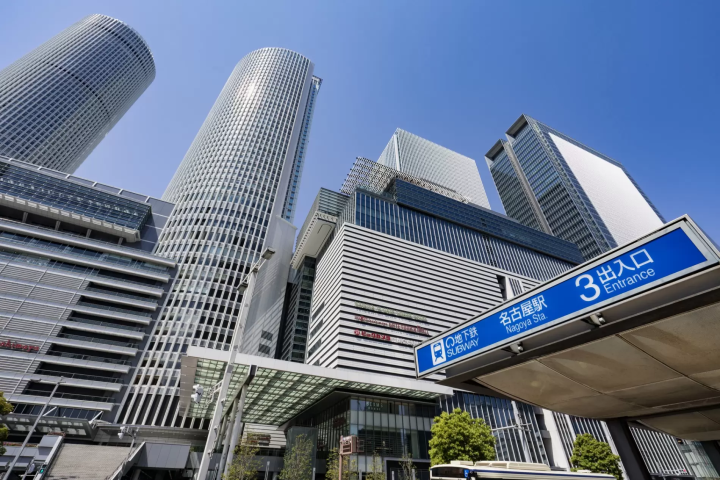
Photo by Pixta
Nagoya is situated in the Nobi Plain in central Japan. It faces Ise Bay to the south, hilly terrain to the east, floodplains to the north and west, and the Atsuta Upland in the center.
Spring and autumn have a pleasant and mild climate. However, summer is consistently humid with humidity levels often exceeding 70%.
Winters are characterized by dry conditions with cold seasonal winds from the northwest, specifically the Ibuki Oroshi, which blows down from Mt. Ibuki on the border of Shiga and Gifu Prefectures. Nagoya is a city that experiences distinct seasonal changes throughout the year.
Average Seasonal Temperatures and What to Wear in Nagoya

Photo by Pixta
Next, we provide a breakdown on the average temperatures in Nagoya and recommend what to wear for each season: spring, summer, autumn, and winter.
Spring (March - May)
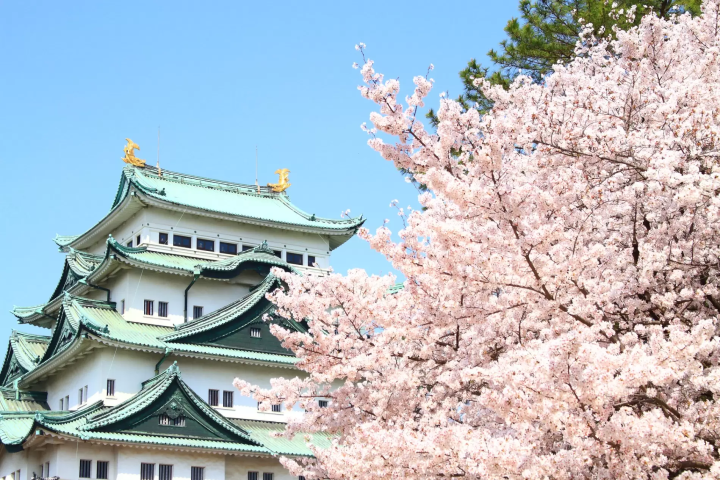
Photo by Pixta
During spring, the average temperature in Nagoya is 9℃ (48.2°F) in March with lingering chilliness, then rises to 14℃ (57.2°F) in April, and reaches 19℃ (66.2°F) in May. Typically, the average temperature increases by about 5°C (9°F) each month during this season.
The cherry blossoms begin to bloom in early spring and reach their full bloom in April, which is the best time to see them. As mentioned, March can still be chilly, so you may need a thick jacket or coat on some days.
However, the average temperature rises significantly by April, making the weather generally pleasant. A light jacket or cardigan will be sufficient.
Summer (June - August)

Photo by Pixta
Summer in Nagoya is strongly associated with the humidity, which is completely accurate. This is due to the Föhn effect, where moist west winds from the Suzuka Mountains become hot dry winds by the time they reach the Nobi Plain.
The average temperature is 23℃ (73.4°F) in June, 27℃ (80.6°F) in July, and 28℃ (82.4°F), with some days experiencing midsummer heat. In recent years, Nagoya has frequently recorded scorching days exceeding 35°C (95°F) due to global warming, making it essential to take adequate measures against heat stroke during this period.
For summer clothing, we recommend choosing breathable materials such as light T-shirts and shorts. Sandals are also a good choice for footwear. The sun is strong, so don’t forget to wear a hat and sunglasses, and apply sunscreen as well.
Autumn (September - November)

Photo by Pixta
In Nagoya, temperatures gradually decrease from early to late autumn. The average temperature is 24°C (75.2°F) in September, 18°C (64.4°F) in October, and 12°C (53.6°F) in November, making for pleasant weather throughout the season.
However, September still experiences many days with lingering summer heat, so summer clothing such as light shirts or blouses will be sufficient. From October onwards, you’ll start to feel the chill more frequently, so you will need a light jacket, cardigan, or sweatshirt.
Winter (December - February)
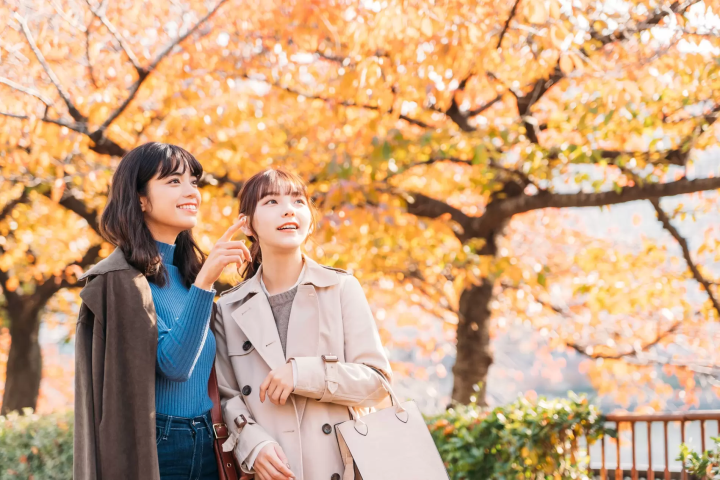
Photo by Pixta
Winter in Nagoya is very cold. The average temperature is 7℃ (44.6°F) in December, and drops down to 5℃ (41°F) in January and February.
In January and February, when the aforementioned Ibuki Oroshi blows, Nagoya experiences its coldest average temperatures. Many days will experience strong winds and the bitter cold.
A thick coat or down jacket is necessary, as well as warm accessories like a knitted hat, scarf, and earmuffs to ensure proper protection against the cold.
Due to the significant temperature difference between the warm indoor environment with air conditioning and the cold outdoors, wearing outerwear that is easy to put on and take off will help you stay comfortable both indoors and outdoors.
Best Time to Visit Nagoya
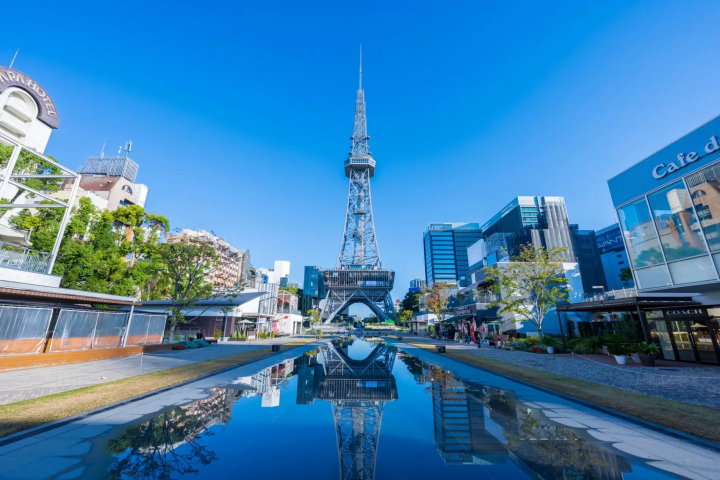
Photo by Pixta
Nagoya is a city that reveals different charms throughout the seasons, and is a recommended sightseeing destination for both domestic and international visitors.
Numerous events are held each season, so there are plenty of things to see and do no matter when you visit. However, as mentioned, the summer heat and the winter cold can be very severe.
If asked to choose a recommended season for sightseeing in Nagoya, we would suggest spring when the weather is generally mild and you don’t have to worry much about the heat or cold. Spring in Nagoya is synonymous with the cherry blossom season at its peak in places such as Nagoya Castle, Tsuruma Park, and Higashiyama Zoo and Botanical Gardens.
If your schedule allows it, be sure to enjoy the beautiful cherry blossoms in Nagoya during the spring.
When is the Rainy Season in Nagoya?

Photo by Pixta
Nagoya actually experiences a lot of rainfall throughout the year. This is because of the moist air that easily enters the city from the south, which faces the ocean.
Rain is heaviest during the tsuyu (“rainy season”) from June to July, and during the typhoon season in September. In July 2013, a record rainfall of 30.0 mm was observed in just 10 minutes.
June, July, and September are often cloudy and rainy due to the influence of weather fronts. Precipitation typically increases during these months.
Nagoya Sightseeing Spots for a Sunny Day
On a sunny day, three places you should visit are Nagoya Castle, Atsuta Shrine, and Tokugawa Garden.
Nagoya Castle
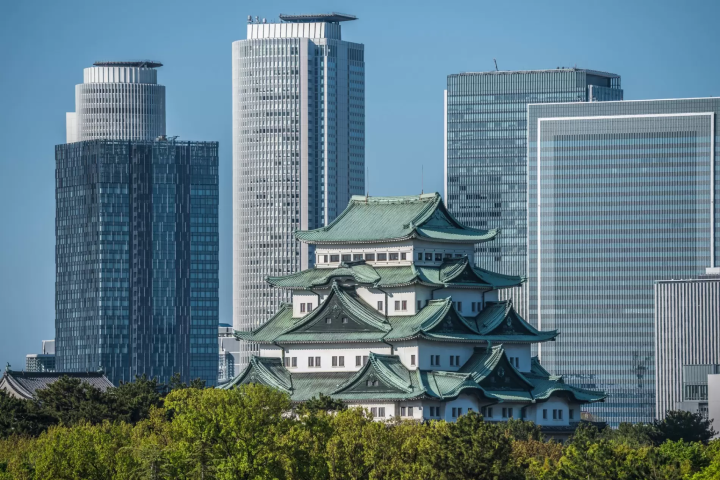
Photo by Pixta
Nagoya Castle, most famous for its golden shachihoko (a mythical creature with the head of a tiger and the body of a fish), is a symbol of Nagoya and a historical sightseeing spot. Construction began in 1610 during the Keicho period, and two years later, the main keep and sub keep were completed. However, these structures were destroyed in an air raid on May 14, 1945.
In 1959, the main keep, sub keep, and main gate (Enokida Gate) were reconstructed. Honmaru Palace was later restored in 2018. (As of July 5, 2024, visitors cannot enter the main keep.)
The Nagoya Omotenashi Bushotai, which sparked the bushotai (a troupe based on historical figures) boom across Japan, welcomes visitors to the castle. They also perform dance shows on Saturdays, Sundays, and holidays.
Nagoya Castle
Address: Aichi, Nagoya, Naka, Honmaru 1-1
Hours: 9:00 - 16:30
Official Website: https://www.nagoyajo.city.nagoya.jp/en/
Atsuta Shrine

Photo by Pixta
Atsuta Shrine, located in Atsuta, Nagoya, is a prestigious shrine that enshrines the Kusanagi Sword, one of three sacred treasures that appear in Japanese mythology.
Around seven million people visit the shrine each year. During Hatsumode, the first shrine visit of the year, approximately 2.35 million people visited in 2024. The Atsuta Festival (Shobu Festival), held annually on June 4th and 5th, is also exceptionally crowded and draws about 250,000 visitors that fills the shrine with vibrant energy.
Many couples have their Shinto wedding at Atsuta Shrine, so you might have the chance to come across a bride and groom. At times like these, you can’t help but congratulate them, and will add a warm and pleasant feeling to your visit.
Atsuta Shrine
Address: Aichi, Nagoya, Atsuta, Jingu 1-1-1
Official Website: https://www.atsutajingu.or.jp/ (Japanese)
Tokugawa Garden

Photo by Pixta
Tokugawa Garden, a Japanese-style garden located in Higashi, Nagoya, was originally an Ozone mansion built in 1695 as a retirement residence for Mitsutomo Tokugawa, the second lord of the Owari Domain. This strolling-style garden spans 2.3 hectares and centers around a pond. It features varied topography with woods and strategically placed rocks, creating a stereoscopic impression for visitors.
There’s also an iris garden modeled after the Ozone Waterfall and the Kiso Mountains, showcasing creative design. This Japanese garden embodies the concept of wabi-sabi, an aesthetic that embraces transience and imperfection, very well. Visitors can fully experience the garden’s beauty throughout the seasons, including fresh greenery, Japanese irises, autumn leaves and more.
Tokugawa Garden
Address: Aichi, Nagoya, Higashi, Tokugawacho 1001
Hours: 9:30 - 17:30 (closed Mondays)
Official Website: https://www.tokugawaen.aichi.jp/english/index.html
Nagoya Sightseeing Spots to Enjoy in the Rain
Next, we introduce places to enjoy even when it’s raining. They are the Toyota Commemorative Museum of Industry and Technology, Konica Minolta Planetarium Manten Nagoya, and the Port of Nagoya Public Aquarium.
Toyota Commemorative Museum of Industry and Technology
The Toyota Commemorative Museum of Industry and Technology, located in Nishi, Nagoya, showcases the history and technology of the Toyota Group, centered around Toyota Motor Corporation, which was the world’s top seller of new vehicles for four consecutive years as of 2023. The museum preserves and utilizes the former Toyota Boshoku Plant, the birthplace of the Toyota Group, as an industrial heritage.
The museum is divided into the Textile Machinery Pavilion and the Automobile Pavilion. Here, staff demonstrate and explain the industrial technologies of textile machinery and automobiles in a digestible form using actual machines from that time. Visitors can thoroughly enjoy the museum even without any prior knowledge of the automobile or textile industries. The museum also has a shop and library, making it possible to spend many hours at the facility.
Toyota Commemorative Museum of Industry and Technology
Address: Nagoya, Nishi, Noritakeshinmachi 4-1-35
Hours: 9:30 - 17:00 (closed Mondays)
Official Website: https://www.tcmit.org/english/
Konica Minolta Planetarium Manten NAGOYA
Konica Minolta Planetarium Manten NAGOYA is Japan’s first planetarium equipped with an LED dome system. Located inside Nagoya Parco in Naka, Nagoya, it notably features programs that combine stunning starry sky projections created with the latest digital technology with soothing music.
Relax in the Aurora Seats (limited to four) to enjoy a virtual starry night sky while experiencing a luxurious, private atmosphere. The planetarium also hosts events featuring fireworks, which may change your perception of what a traditional planetarium has to offer.
The planetarium is inside a shopping complex, so you can enjoy shopping or having a meal without having to step outside the building.
Konica Minolta Planetarium Manten NAGOYA
Address: Aichi, Nagoya, Nishi, Noritakeshinmachi 3-1-17 AEON MALL Nagoya Noritake Garden 3F
Hours: 10:00 - 21:00
Official Website: https://planetarium.konicaminolta.jp/manten-nagoya/ (Japanese)
Port of Nagoya Public Aquarium
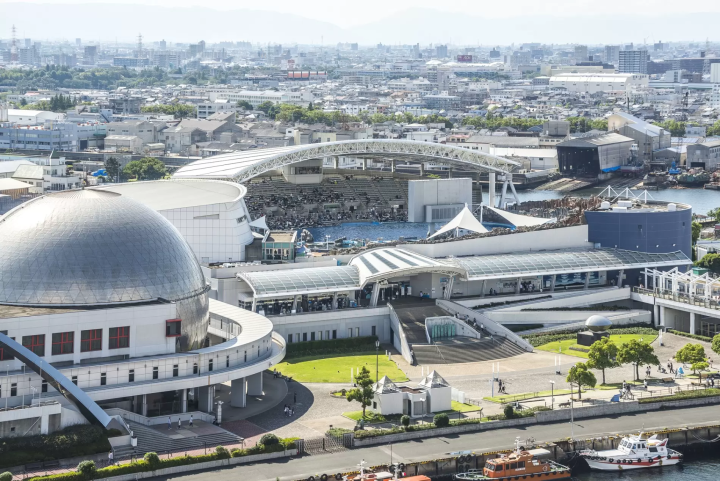
Photo by Pixta
The Port of Nagoya Public Aquarium, located in Minato, Nagoya, is one of Japan’s largest aquariums, housing around 50,000 sea creatures across 500 species from around the world. The aquarium is divided into two sections: the South Building, where you can explore ecosystems and see penguins from the South Pole, and the North Building, which showcases marine life from the Sea of Japan and deep-sea creatures.
Noteworthy are the orcas and emperor penguins. In Japan, the only aquariums where you can see orcas are here and Kamogawa Sea World in Chiba. Emperor penguins can only be found here and at Adventure World in Wakayama. The Port of Nagoya Public Aquarium is the only aquarium that houses both species.
Performances that explain the behaviors and ecology of sea creatures in an easy-to-understand manner are held at the Main Pool, which can accommodate up to 3,000 people. Additionally, there is an amusement park outside the aquarium that children can enjoy.
Port of Nagoya Public Aquarium
Address: Aichi, Nagoya, Minato, Minatomachi 1-3
Hours: Varies by season
Official Website: https://nagoyaaqua.jp/english/
Have a Wonderful Trip in Nagoya!
Nagoya is a city that reveals different charms in each season. While the summer heat and winter cold can be harsh, spring and autumn offer very pleasant weather.
We especially recommend visiting in the spring at least once to see the beautiful cherry blossoms at Nagoya Castle, Tsuruma Park, and Higashiyama Zoo and Botanical Gardens. Additionally, there are plenty of sights, such as the Toyota Commemorative Museum of Industry and Technology, that can be enjoyed rain or shine.
Read also
Main image by Pixta
Written by Kakutama editorial team
This is the official account of MATCHA's editorial department. Our articles feature useful travel information for visitors to Japan, from how-to guides to recommended places to visit.



































![[2026] Family Winter Trip to Suzuka Circuit! – For Both Day trips and Overnight Stays!](https://resources.matcha-jp.com/resize/720x2000/2025/12/26-254097.webp)
![[Northern Okinawa] 4 Recommended Cosmos Fields in Okinawa | Sunflowers and Cherry Blossoms in the Same Season!](https://resources.matcha-jp.com/resize/720x2000/2024/08/12-192028.webp)


